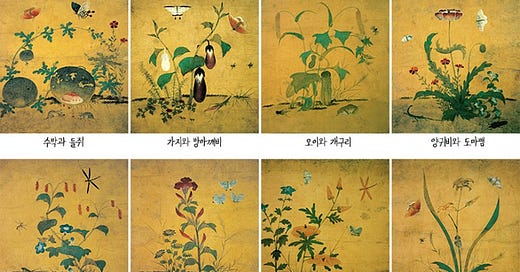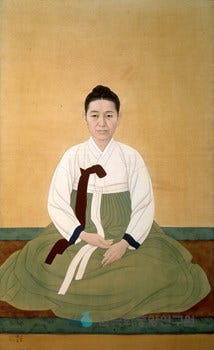Hello, everyone! How are you spending your week? I've been quite busy, but I've been having a dense and fruitful time. I recently met a friend who expressed concern that I might burn out if I continued to be too busy. This friend told me to distinguish between activities that give me energy and those that drain my energy. And for those activities that drain my energy, I should delegate them or do them in my favorite place as much as possible.
So, I thought about what gives me the most energy during my day. The time of day when I feel the most energized is when I'm teaching my students. I gain a lot of energy while teaching because I see my students' Korean language skills improving or when they take on challenges that are difficult but rewarding. Thanks to this energy, I feel like I can enjoy my busy days. Are there people who want to share positive energy with me? For those who are interested in my next semester's classes, I'll leave a link below.
Also, just a reminder our Spring Semester will be starting on April, 16th(17th in KST). We still have some seats available. If you are wanting to take advantage of the discounted price, our early bird special is available until March 31st.
Now, let's get started and talk about today's topic.
Shin Saimdang
This edition of our newsletter is in honor of Women’s ♀️ History Month. We want to introduce you to Shin Saimdang. Shin Saimdang is a literary figure and artist🎨🖌, who was widely celebrated for her accomplishments in the 16th century. She is known for being an inspiring hero to Korean women, and her impact on the culture of Korea has her appearing on the 50 thousand won bill.
Passion❤️
Shin Saimdang was born in 1504, and her father was a well-known Confucian scholar in the Joseon Dynasty. She was the second child born and only had sisters. From a young age, she displayed a keen interest in the arts and began studying calligraphy, painting, and poetry. Her paintings were praised for capturing the beauty of Korea’s nature. She painted flowers🌺, birds🐦, and landscapes🖼. Shin Saimdang married at the age of 19. She gave birth🤰 to six children.👶 Despite her busy life as a mother🤱, she continued to pursue her passion💕 for the arts.
Determination 🏃♀️and Devotion 👩🏫
Back in the Joseon Dynasty, women's voices were largely unheard. Despite facing discrimination, Shin Saimdang excelled academically and educated young girls.🙋♀️ Her strength, courage, and determination inspired other women to raise their voices 📢 against sexism, creating great opportunities👩🎓 for future generations of women. Shin Saimdang was known for her deep devotion to her children and her commitment to raising them with a strong sense of morality and virtue. Her son, Yulgok Yi I, followed in her footsteps
Yulgok Yi I wrote about his mother's influence on his life and career. He always praised her mother for being an inspiration and a role model for all mothers.
₩50000
In addition to her artistic accomplishments, Shin Saimdang was also an incredible writer. She wrote many essays 📝, on a wide range of topics, such as Confucian philosophy, ethics, and women's rights. Her writings were highly respected and read during her lifetime and beyond. Her commitment to education and her immense contributions toward advancing the status of women in Korea made a major difference in the 16th century. The government selected Shin Saimdang to be on the highest bill, which is ₩50000, because of her legacy as an accomplished figure in Korean history. Also, Her son, Yulgok Yi I, is on the ₩5000.
Conclusion
Shin Saimdang continues to inspire generations of Koreans and other women around the world🌎 with her many achievements. When you see the Korean ₩50000 bill, you will be reminded of Shin Saimdang's legacy as an outstanding mother👩, writer✍️, artist👩🎨, and representative for women's equality.👩








